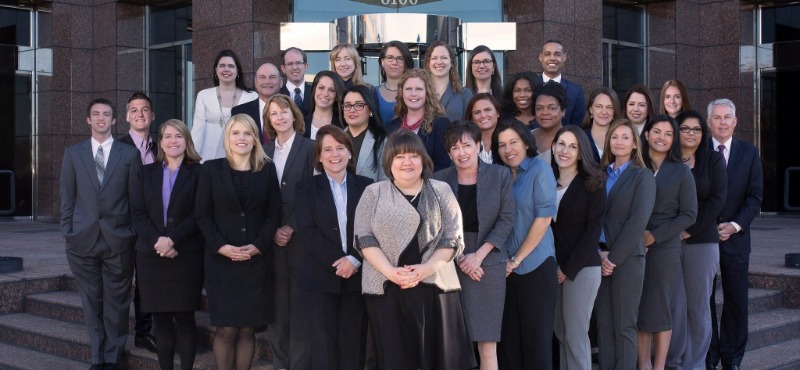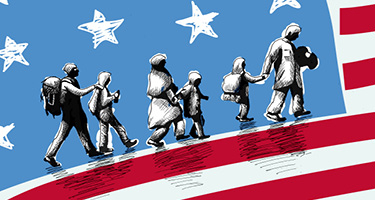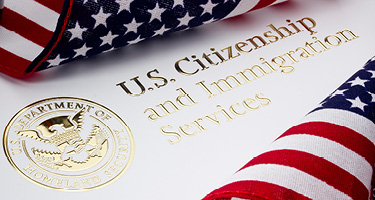There is a statutory cap that limits the number of new H-1B petitions that may be approved in a fiscal year. The cap of H-1B visas is currently set at a total of 85,000. 20,000 of those visas are reserved for the “Master’s Cap” for those foreign nationals who have obtained an advanced degree from a U.S. college or university. The filing period for Fiscal Year 2019 was April 2-6, 2018. During that time, U.S. Citizenship and Immigration Services received 190,098 H-1B petitions and used a computer-generated random selection process (commonly known as the “lottery”) to select the appropriate number of petitions to meet both caps. This number is down from FY 2018’s total of 199,000. For those petitions not randomly selected, employers and foreign national employees are often left scrambling to find other visa options. It is important to note that there is hope after the H-1B cap and that other options, while not always ideal, are available. [1]
Does the Cap Apply to You?
The cap may not necessarily affect every employer, as some are exempt from the H-1B cap. These employers include institutions of higher education or a related or affiliated nonprofit entity, nonprofit research organizations, and governmental research organizations. Additionally, H-1B extensions, change of employer petitions, and amended petitions are not affected by the cap.
Concurrent Employment with a Cap Exempt Employer
If an individual holds H-1B status pursuant to cap exempt employment, then s/he may accept concurrent employment with a cap subject petitioner. In other words, if an H-1B holder is concurrently employed with an exempt and nonexempt employer, then s/he will not be counted toward the cap. Alternatively, an H-1B employee may be employed by a cap-subject employer but employed at a qualifying cap-exempt organization, and would not be counted against the annual cap.
The Cap Applies – What Are Other Options?
► Employment Authorization Pursuant to F-1 Student Status
An employee may be able to leverage employment authorization based on current F-1 status or, in the alternative, return to school to further his/her education and receive employment authorization in the course of his/her studies. An F-1 student may be eligible for the following:
- Curricular Practical Training (“CPT”). CPT is authorized by the school’s Designated School Official (“DSO”) on the student’s form I-20 and the position offered must be relevant to the student’s degree program. Students are not limited in the amount of CPT in which they may participate; however a student who has engaged in one full year of CPT is ineligible to participate in post-completion OPT.
- Note a recent trend where USCIS is questioning the validity of CPT, especially where the student continues working for the OPT employer by enrolling in a degree program that immediately authorizes CPT. Students who pursue this option should maintain detailed documentation demonstrating their course attendance, including but not limited to official copies of current transcript, copies of degrees/certificates showing course completion, receipts for tuition payments, books, parking passes, & school supplies, school ID, course syllabi or outlines for the program, documentary evidence of physical attendance, and utility bills or other evidence of student’s current residence.
► Optional Practical Training (“OPT”)
OPT may be authorized in an occupation that is directly related to the student’s major area of study. Generally, the total period of such authorization cannot exceed 12 months, with limited exception.
Note a recent trend where USCIS is denying an H-1B change of status request where the student has used more than 12 months of CPT and OPT at the same degree level.
► 24 Month Optional Practical Training (“OPT”) STEM Extension
F-1 students who receive science, technology, engineering, and mathematics degrees included on the STEM Designated Degree Program List may be eligible for an additional 24 months of post-completion OPT beyond the initial 12 month period mentioned above. To qualify, the F-1 student must currently be in a valid period of OPT and the STEM employer must meet certain requirements, including, but not limited to, enrollment in E-Verify, offering an OPT opportunity that is commensurate with those of similarly situated U.S. workers, implementation of a formal training program, and completion of a training plan.
► Training Visas
If the position offered is more a training opportunity than productive employment, then the employer should consider a training visa.
- H-3 Visa. To qualify, the training program must meet the following conditions: the training is not available in the applicant’s own country; the applicant will not be placed in a position which is in the normal operation of the business; the applicant will not engage in productive employment; and the training will benefit the applicant in pursuing a career outside the U.S. The applicant must also be able to prove that she plans on returning to her home country, both at the time of application for the H-3 visa and admission to the United States.
- J-1 Visa. This visa permits foreign nationals to participate in an exchange program designated by the U.S. Department of State. The applicant must be coming to the U.S. for the purpose of teaching, instructing, lecturing, studying, observing, conducting research, consulting, demonstrating special skills or receiving training. In order to receive a J-1 visa, the applicant must apply for and be accepted by an exchange visitor program designated by the U.S. Department of State. Some exchange visitors are prohibited from acquiring H, L, or permanent residence status for 2 years after participating in a J-1 program unless they obtain a waiver of that requirement from the U.S. Department of State.
► May 2018 Policy Update
On May 11, 2018, USCIS issued a policy notice regarding “Accrued Unlawful Presence by Nonimmigrant Students and Exchange Visitors.” Foreign Nationals in F, J, and M (vocational training other than a language) non-immigrant statuses are given D/S or “Duration of Status” on their I-94 forms during their time as students and visitors. In the past, while it was problematic for these foreign nationals to remain past their completion of studies without changing status, they would not accrue “unlawful presence.” Accruing unlawful presence can lead to various bars to future US re-entry. Under the new policy, beginning August 9, 2018, individuals in F, J, and M status who failed to maintain their status will start accruing unlawful presence on that date should they fail to change their non-immigrant status or leave the US. [2]
Other Options?
► O-1 Visa for Extraordinary Ability
Foreign nationals who are highly talented or have reached a high level of acclaim in the sciences, arts, education, business or athletics should consider the O-1 visa. To qualify, the foreign national employee must be extraordinary in her field in terms of knowledge, ability, expertise and accomplishments and the position being offered must require the services of an extraordinary person. When pursuing the O-1 visa, the beneficiary should be prepared to demonstrate that she has sustained national or international acclaim and that her achievements have been recognized in the field through extensive documentation.
► B-1 in lieu of H-1B
There is short term option for individuals who will be posted in the U.S. in a professional level position and who hold the equivalent of a U.S. bachelor’s degree. The applicant must receive her salary only from her foreign employer, except reimbursement of incidental travel costs such as housing or per diem. This visa is not intended for long term placement and should be used for activity in the U.S. that is less than 6 months in duration.
► Work Outside the US – and Come Back
Global employers may create visa opportunities by electing to send key employees to work for an affiliate, subsidiary, or parent company outside the U.S. for one (1) year in a specialized knowledge, managerial, or executive role. This strategy may qualify the employee for an L-1 visa and facilitate the green card process for those who qualify as Multinational Managers.
► Treaty Visas
Employers should also keep in mind that certain nationalities have additional visa options available to them, including but not limited to, Australia, Canada, Mexico, Chile, and Singapore.
► Lawful Permanent Residence
For those foreign nationals not born in one of the countries with a backlog of immigrant visas, sponsorship by a U.S. employer for lawful permanent residence (“green card”) may be an option for long-term work authorization in lieu of short-term.
Stay Tuned
Identifying viable alternatives to the H-1B visa is an increasingly relevant exercise for employers as the demand for the H-1B continues to exceed the statutorily allotted numbers. On April 18, 2017, President Trump signed an executive order entitled, “Buy American and Hire American,” [3] which ordered a multiagency report on changes needed to the H-1B which may result in an even more restrictive visa program. For two straight years, the H-1B visa applicants have been restricted in using premium processing, an option to expedite case adjudications. USCIS states on its website that premium processing will not be available until September 10, 2018.[4] Policy decisions such as these are the likely cause for less H-1B visa applications in recent years.
------------------
Meredith W. Barnette has practiced U.S. Immigration law since 2006. Prior to becoming an attorney, she was an Immigration Paralegal. Ms. Barnette represents employers and employees in a variety of industries including, but not limited to manufacturing, information technology, medicine, and academia. She has extensive experience in the preparation of nonimmigrant visa petitions as well as extraordinary ability, outstanding researcher and multinational executive and manager immigrant petitions.
------------------
[1] https://www.uscis.gov/working-united-states/temporary-workers/h-1b-specialty-occupations-and-fashion-models/h-1b-fiscal-year-fy-2019-cap-season
[2] https://www.uscis.gov/news/news-releases/uscis-changing-policy-accrued-unlawful-presence-nonimmigrant-students-and-exchange-visitors
[3] https://www.uscis.gov/news/alerts/uscis-will-temporarily-suspend-premium-processing-fiscal-year-2019-h-1b-cap-petitions





























